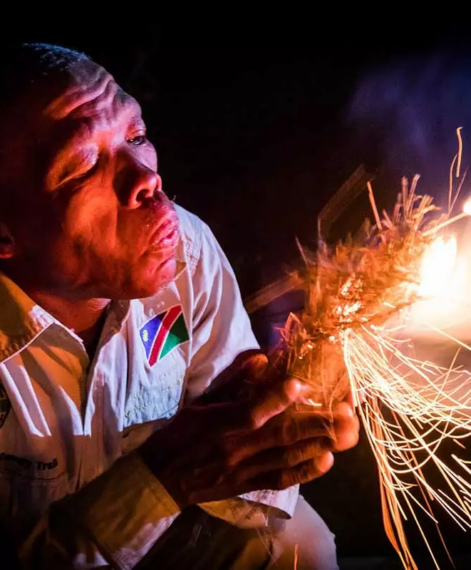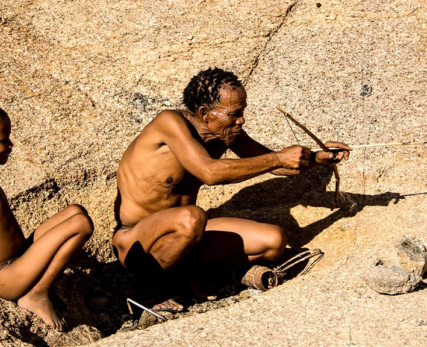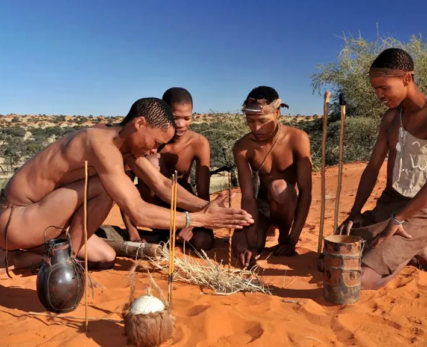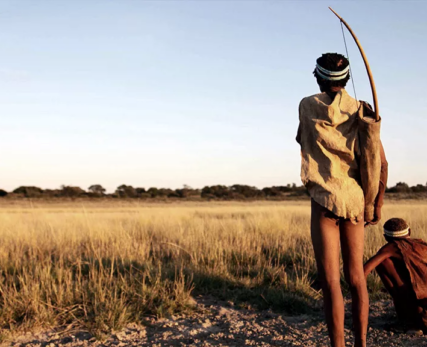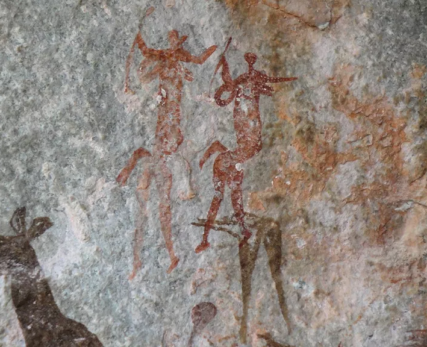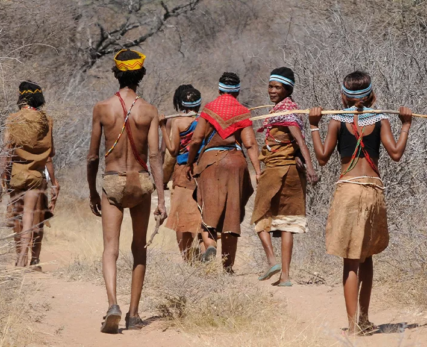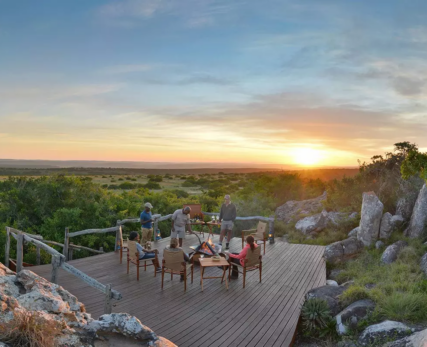San people have been living in Southern Africa for at least 30000 years and it is believed that they have one of the oldest cultures on our planet.
Click here to read more about 7 of the oldest African tribes that still exist today and still practice their ancient traditions.
Experience the Ancient Wisdom of the Ju/’hoansiat Shamwari
Shamwari Private Game Reserve is offering an Indigenous San Tracking Experience for guests in the year 2020. During this unique experience, guests can enjoy insights into the ancient skills and wisdom of San hunter-gatherers during guided bush-walks.
Two of the very bestJu/’hoansi Master Trackers, /ui-Kxunta and /ui-G/aqo, will join Shamwari’s own skilled rangers on the first trail – limited to a maximum of six guests. Other ace trackers such as Dam Debe – who played a cameo part in The Gods must be Crazy as a child– will make their appearance on later trails.
While tracking is their extraordinary forte, these trackers will also offer demonstrations of their fire-lighting skills with firesticks, as well as bow-and-arrow demonstrations(sans poisoned tips!). Guests will be invited to try their hand at tracking, archery and rock art interpretations and be able to listen to fireside stories of the old ways in distant times.
We can imagine no better way to experience the African wilderness than on foot with these custodians of ancient wisdom and unsurpassed skills of tracking and bushcraft. This specialised adventure forms part of the Explorer Camp experience: a 2-day encounter that takes guests closer to nature than they have ever been before. Guests can only secure their San Tracking Experience by booking their stay at this one-of-a-kind camp on their preferred set dates in 2020:
- 28-30 January
- 31 January- 2 February
- 14-16 April
- 17-19 April
This once-in-a-lifetime experience is available for R 8000 per person sharing per night at Shamwari’s unique Explorer Camp. It is inclusive of accommodation, meals, beverages and the Indigenous San Tracking Experience.
This is a rare opportunity, one to be seized upon and treasured: tracking in the bush with custodians of millennia-old skills, combined with unsurpassed luxury at an Explorer Bush Camp!
During South Africa’s summer season, Shamwari Private Game Reserve expands its offering even further by opening the Explorer Camp. This back to nature experience takes guests on a guided walking safari of the surrounding land, allowing you to get up close and personal with nature.
The Explorer Camp is discreetly fenced for safety reasons but still retains true explorer ambience. Tents are placed in close proximity without encroaching on each other’s privacy, while the camp is located on a plateau set among the only basalt and granite extrusions on Shamwari – a truly magical setting.
